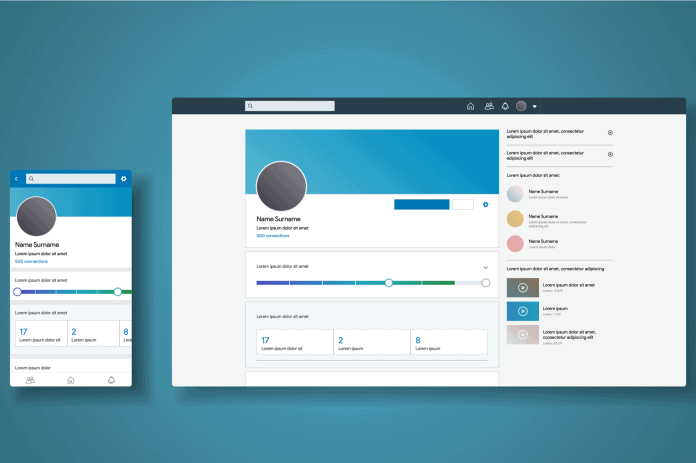Changes in B2B sales and marketing were happening rapidly even before the global pandemic shook the world as we knew it.
It was clear that social selling, multichannel solutions, and e-commerce would have eventually replaced traditional marketing and face-to-face sales. Covid just accelerated these transitions and awarded those who were bold enough to go down that road far prior to the pandemic.
While opportunities abound for those who dare, many still linger in outdated ways hoping that things will go back to normal post-Covid. The truth is, this is the new normal, and the sooner you embrace the change, the less likely you are to fail miserably.
All of this resulted in B2B Sales and Marketing being given a chance (not to say being forced) to execute advanced tactics, engage with prospects and existing customers, and spread the company brand awareness together, united on one battlefield – LinkedIn.
The struggle for attention on the platform is real, true. However, LinkedIn is made in a way to promote organic reach, inbound influx, relevance, adaptability, and relationship building, all ingredients necessary for successful social selling and company growth.
Basically, what I’m trying to say is that LinkedIn is on your side. As soon as you understand the rules of the game, it’ll become your most trusted partner in business.
Humans over companies
With LinkedIn, building a brand around a company shifted to building a brand around people who work in it. Your buyers are not interested anymore in generic outreach, paid ads, and one-way relationships, especially not with the chatbot from your company page. This means that you, your CEO, your Sales and Marketing Teams, everyone – should be on LinkedIn to daily interact with your community and audience.
Nowadays buyers have so many options to choose from, so why would they go with your company? The goal is to not only position yourselves as experts in the field and thought-leaders but also to understand your clients’ needs and wants and use them to provide the best service possible.
The majority of buyers go to check out your company page on LinkedIn and investigate your decision-makers’ LinkedIn profiles before reaching out or making a purchase. Basically, your LinkedIn accounts are equally, if not even more important than your website and your employee’s business card.
And yes, you can achieve all of the above with a good LinkedIn content strategy! Just use your expertise and wit, after all, those are the reasons you came so far, aren’t they?
Value over hard-close sales
When it comes to engagement, LinkedIn is your oyster!
With feed posts, polls, the possibility to upload images, videos, carousel documents, and LinkedIn articles, you can reach pretty much anyone on the platform. Once, you used to be limited by the number of searches that were being made on Google and by bidding on all sorts of keywords that could potentially increase your visibility. Now, provide value every time you decide to share something with the world and LinkedIn will award you with a head-spinning organic reach!
Use LinkedIn content features to establish yourself and your company’s expertise, write posts that encourage comments and reshares to inquire on something that you recently launched or are thinking of launching, conduct a poll for a quick, yet valuable insight into the market. Then, if part of your strategy, reach out to those who engaged with your content and treat yourself with some quality lead generation.
Let building relationships be your main goal, and sales its end result.
Direct approach over inaccessibility
Remember when it took you ages to get to that Head of Sales? How many times have you heard – Oh, I’m not the right person for what you need? And how often did you even know whom to reach out to in the first place?
LinkedIn solved this issue with its advanced targeting aka Sales Navigator and a plethora of direct-messaging options. By setting your parameters properly, you can have a list of people in charge of what you need in a matter of seconds, their entire professional achievements right in front of you together with the necessary contact information. That’s how you can connect with the person of your interest, send them a free or paid LinkedIn InMail or write directly to their email address that you can find in the contact info section, right below the headline.
However, have in mind that LinkedIn eliminated forever the spray-and-pray business tactics. Therefore, it won’t allow you to send random requests or numerous messages that are not getting replies. Being marked as a spammer as low as a few times can get you banned from the platform for good.
Summary
Nowadays B2B buyers are well connected, better informed, and more demanding. The product or service alone is not enough. Just the fact that over 70% of B2B buyers are taking into consideration the relevant content and rapport with the company’s decision-makers when choosing to move forward with the purchase speaks for itself.
Whether you like it or not, LinkedIn is the new trendsetter (or, maybe, rule-setter?). Before you start thinking about how you don’t have the time to adapt to the new ways of doing B2B Sales and Marketing, remember that slow but steady wins the race.
And that’s what all companies want: steady growth, right?




